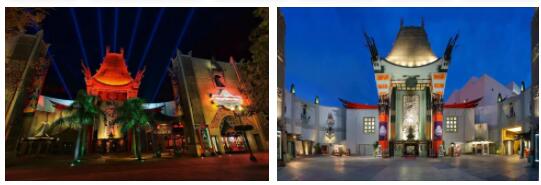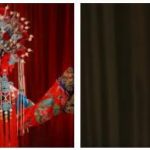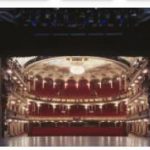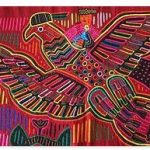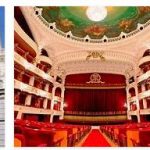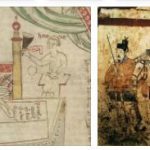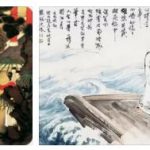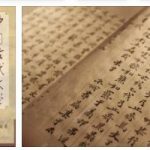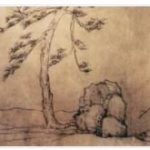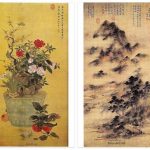chinese theater [ç-]. Until the introduction of spoken theater in the early 20th century, the Chinese theater was a musical theater with fixed roles. This emerged from the combination of religious ritual, courtly ceremonial dance and circus-like games as well as various kinds of musical performances. Traditionally, the position of the playwright in Chinese society has to be distinguished from Western standards: In contrast to Greek poetics, which particularly viewed epic poems and mimetic drama as literary genres, in China the lyrical poem was considered the actual literary form. Poets and non-narrative prose writers – not dramatists – were considered to be the representatives of Chinese literature.
Early forms
Theatrical, storytelling performances – after dances and chants by shamans, as well as court jesters and acrobatic performances during the preceding period – have existed since the middle of the first millennium. At the instigation of Emperor Xuanzong (Hsüan-tsung, 712–756) of the Tang Dynasty (618–907), a school called »Pear Garden« was established in the capital, today’s Xi’an, to train musicians and dancers. Theater emerged from forms of entertainment only very slowly, increasingly during the boom of trade and handicrafts in the great urban centers during the Song Dynasty (960–1279).
Development of the theater into an art form
The earliest heyday of Chinese theater was the Yuan Dynasty (1271–1368). The Yuan Theater (Zaju, Tsa-chü) draws its structure from the classical, form-strict drama of China: A Zaju (Tsa-chü) almost always has four acts. Little is known about most of the Yuan playwrights. Guan Hanqing (Kuan Han-ch’ing, 13th century) was the most productive; i.a. he wrote “The Unjust Punishment of Dou E” (“Dou E yuan”) about a woman who is intrigued for murder before her father can reopen the case and punish the guilty. Two other Yuan dramas focus on the conflict between love and politics: Bai Pu (Pai P’u, 13th century) wrote “Rain on the Paulonia Tree” (“Wutong yu”; German) about the love of Tang Emperor Xuanzong (Hsüan-tsung, * 685, † 762) to his concubine Yang Guifei (Yang Kuei-fei, † 756). Ma Zhiyuan (Ma Chih-yüan, 13th century) dramatized the life of one of the famous women of history, Wang Zhaojun (Wang Chao-chün): An emperor of the Han dynasty is compelled to cede her as his favorite concubine to the khan of the steppe peoples; on the way, Wang Zhaojun commits suicide in the border river. “The West Room” (“Xixiang ji”; German) by Wang Shifu (Whang Shih-fu, * 1250) is the most famous Chinese love drama. Using the example of a young man gifted with intellectual and artistic abilities and the no less intelligent, often more decisive and courageous young beauties – two role archetypes – the handling of conventions and individual inclinations is discussed.
With Gao Ming (Kao Ming, * 1305, † circa 1370) and his work »Die Lute« (»Pipa ji«; German), the formally freer theater of the Ming period began, the Chuanqi (Ch’uan-ch’i). From this emerged the Kunqu (K’un-ch’ü), the theater of the educated, around the middle of the 16th century. Tang Xianzu (T’ang Hsien-tsu, * 1550, † 1616) contributed significantly to its development. His best-known piece “Der Päonienpavillon” (“Mudan ting”; German) describes Du Liniang’s love for the student Liu Mengmei. Du Liniang dies of longing, but is brought back to life by the power of love and the compassion of the gods; the lovers live happily together after further confusion. Hong Sheng (Hung Sheng, * 1645, † 1704) published another love drama in 1679 with “The Palace of Long Life” (“Changsheng dian”).
The main characters in “The Peach Blossom Fan” (“Taohua shan”) by Kong Shangren (K’ung Shang-jen, * 1648, † 1718) are two historical figures: the young scholar and poet Hou Fangyu (Hou Fang-yü, * 1618, † 1655) and Li Xiangjun (Li Hsiang-chün), a singer from the Nanking entertainment district. Their love story takes place against the background of the Nanking court at the end of the Ming dynasty and the dispute between two factions, the Ming loyalists who are determined to resist the Qing and those who are willing to compromise. The decline of the kunqu (K’un-ch’ü) began in the 19th century as regional theater styles grew in popularity.
19th century – the birth of the Peking Opera
Peking Opera spread in the 19th century. It is not a literary drama, but stage theater, dominated by powerful actors rather than by its narrative content. The Peking Opera uses a symbolism of clothing, props and gestures to represent it. Like other forms of music theater in China, a country located in Asia according to eningbo.info, Peking Opera is also characterized by fixed role subjects that imply typification, not emphasis on individual character. The roles are divided into four main subjects: Sheng - male role of student or official, mostly positive; further divided into Laosheng ([Lao-sheng] middle or mature man) and Xiaosheng ([Hsiao-sheng] young man: student, lover); Dan (Tan) – female role; Beijing opera reached its climax with the great female actors in the 20th century (including Mei Lanfang [Mei Lan-fang]); it was only since the 1920s that women’s roles were increasingly represented by women; today it is common practice; Jing (Ching) – male role with face-paint (Lianpu); Chou (Ch’ou) – buffoon, rogue.
